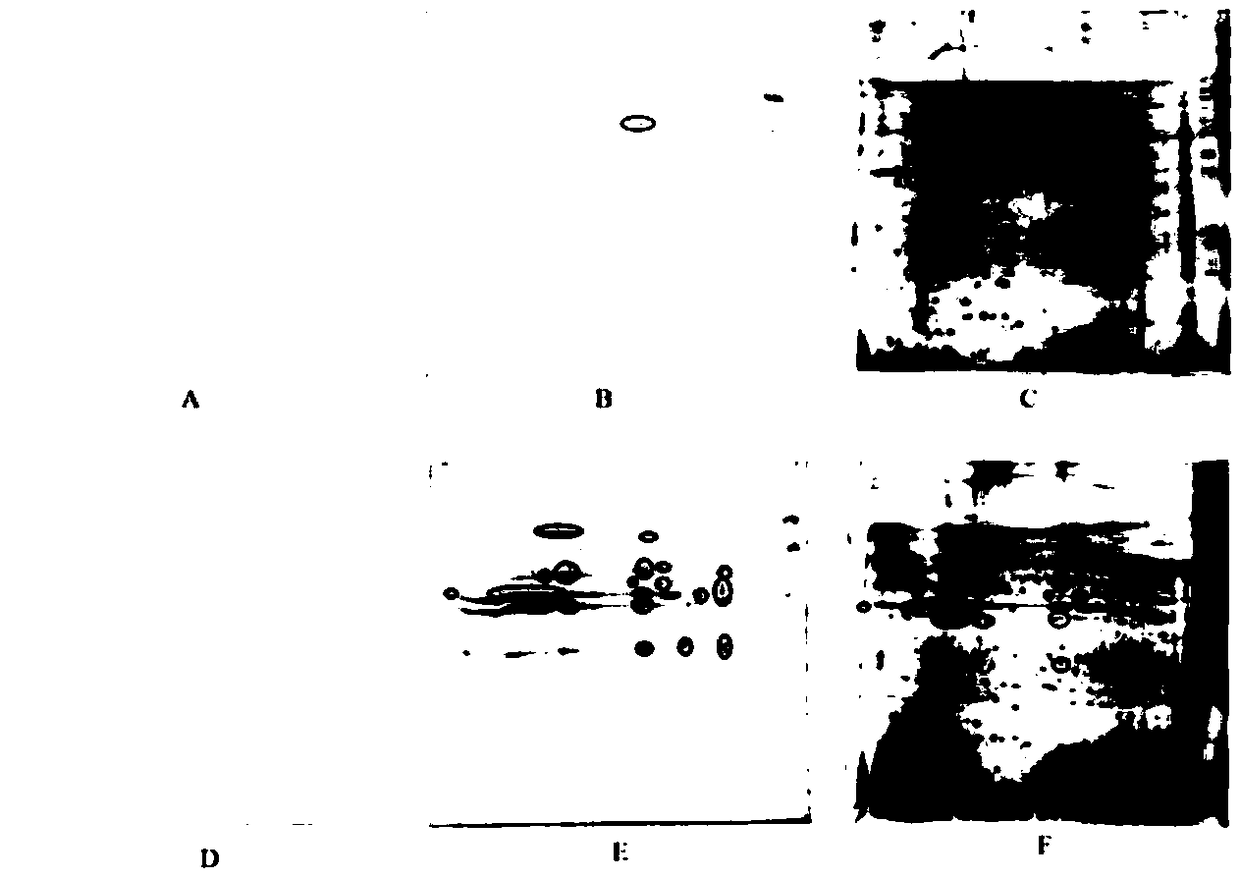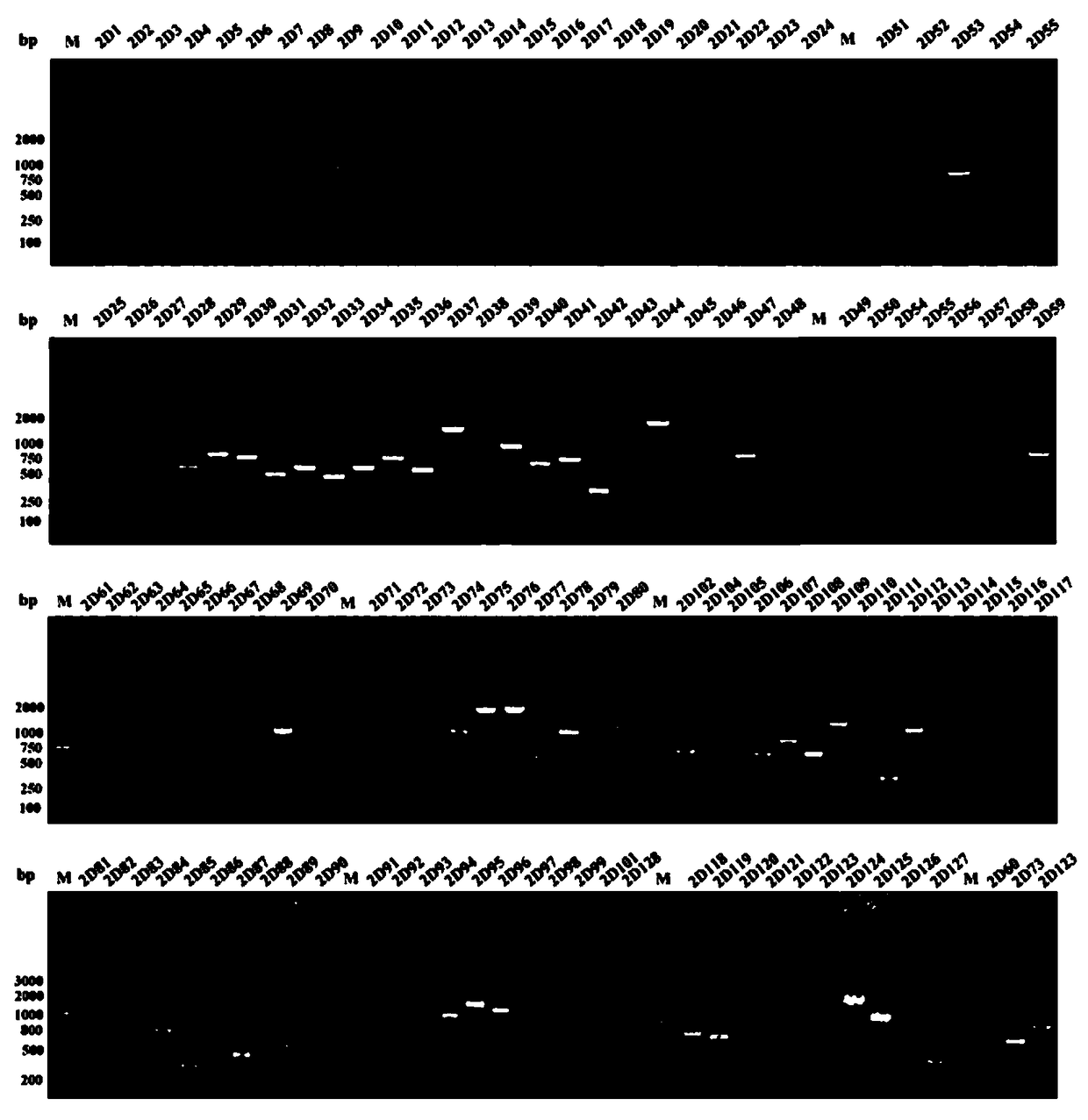Babesia mocroti 2D97 antigen protein and application thereof
An antigen protein, Babesia technology, applied in the field of cell, proteomics and immunology, molecular field, can solve the problem of unmonitored disease process, unclear antigen spectrum/immune response spectrum, ineffective detection of samples, etc.
- Summary
- Abstract
- Description
- Claims
- Application Information
AI Technical Summary
Problems solved by technology
Method used
Image
Examples
Embodiment 1
[0045] Example 1 Source of animal serum
[0046] 1. Laboratory animals and insect strains
[0047] The experimental animals were BALB / c mice aged 6-8 weeks, purchased from the Shanghai Experimental Animal Research Center of the Chinese Academy of Sciences. Babesia microti PRA-99T, provided by the Institute of Experimental Zoology, Chinese Academy of Medical Sciences, was inoculated and stored in liquid nitrogen for passages in this experiment.
[0048] 2. Serum collection
[0049] The blood of the standard strain of Babesia voles taken from the liquid nitrogen is balanced to room temperature, and diluted with sterile 0.9% normal saline at a ratio of 1:1 and mixed evenly. Use a 1ml sterile syringe to draw 200μl of diluted worm blood and inject it into the abdominal cavity of BALB / c mice to resuscitate Babesia voles in the mice. Observe and count the pathogen of Babesia voles by microscopic examination. Before the worm disease reaches the peak (no hemolysis, the infection rate of red...
Embodiment 2
[0051] Example 2 Western blot hybridization, analysis and identification of Babesia voles crude protein
[0052] Babesia microti PRA-99T, provided by the Institute of Experimental Zoology, Chinese Academy of Medical Sciences. The voles Babesia was inoculated into BALB / c mice, and whole blood was collected for anticoagulation, red blood cells were separated, lysed, centrifuged, and the precipitate was collected and confirmed to be Babesia by microscopic examination. Through immunoomics techniques, such as figure 1 As shown, the crude protein of Babesia voles was hybridized with 7dpi and 30dpi mouse sera, respectively, and 87 Babesia voles protein was identified by mass spectrometry analysis, including 8 sera from 7dpi mice. The identified protein.
Embodiment 3
[0053] Example 3 Obtaining the antigen immune response spectrum of Babesia voles
[0054] 1. Experimental materials and methods
[0055] 1.1 Vectors and strains
[0056] E. coli DH5α was purchased from Beijing Tiangen Biochemical Technology Co., Ltd. The linearized vector pEU-E01-His-TEV-MCS-N2 (restriction endonuclease cut sites Xho I, BamH I) and Babesia voles genomic DNA were preserved and provided in this experiment.
[0057] 1.2 Experimental equipment and reagents
[0058] (1) Main instruments:
[0059] PCR instrument; constant temperature metal bath; vertical laminar flow clean bench; full temperature shaking incubator; electric heating constant temperature incubator; desktop high-speed refrigerated centrifugation; small centrifuge; NanoDrop2000 (ultra-micro ultraviolet / visible light spectrophotometer); high-pressure steam sterilization Pot; Decoloring shaker; Constant temperature mixer; Model 85-2 constant temperature magnetic stirrer; Nucleic acid electrophoresis instrument; Pr...
PUM
 Login to View More
Login to View More Abstract
Description
Claims
Application Information
 Login to View More
Login to View More - R&D
- Intellectual Property
- Life Sciences
- Materials
- Tech Scout
- Unparalleled Data Quality
- Higher Quality Content
- 60% Fewer Hallucinations
Browse by: Latest US Patents, China's latest patents, Technical Efficacy Thesaurus, Application Domain, Technology Topic, Popular Technical Reports.
© 2025 PatSnap. All rights reserved.Legal|Privacy policy|Modern Slavery Act Transparency Statement|Sitemap|About US| Contact US: help@patsnap.com



